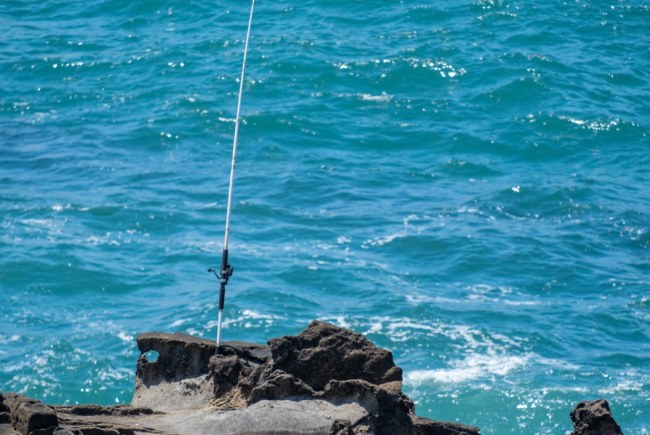Most saltwater fishing can be divided out into three distinct types of fishing offshore, surf and inshore within each of those there are a huge number of different species to target.
However, a heavy offshore rig would not make the best inshore fishing setup and getting your tackle correctly matched to the species you target and techniques you will be using is a crucial component to your success.
That, and a little luck!
When looking at choosing an inshore setup most anglers will opt to purchase an all rounder that can be used for various different locations and different types of lures.
Personally I think to get the very best from your inshore fishing two highly targeted setups are best, one light and one slightly heavier.
- Light setup – 7 foot medium power rod with a fast action and 8 lbs line, suited to jigging, drop shotting and light close quarters casting for smaller sub 5 lbs specks or redfish.
- Heavier setup – 7’6″ medium/heavy power rod with a fast action and 10 to 12 lbs line for heavier lure work and longer casting when sight fishing on flats.
If I had to choose one it would be the heavier setup as I do little small jig work and the longer rod will always have the better casting performance.
Inshore Fishing Setup
1. Rod
A rod length of at least 7′ is prefer ed if possible 7’6″ when fishing inshore.
As a general rule you when fishing grass flats for example the chances of you getting right up to school of redfish or speckled trout is quite rare and you will be casting from distance more often than not.
Longer rods cast longer distances and they will also allow you to pick up any slack line in your system when you go to set the hook.
If you go with a shorter rod of about 6’6″ in length and then switch to a longer rod of 7’6″ the difference in usability will feel like night and day.
Longer rods are just better.
The only real exception is if you are skipping smaller lures around tight docks. Then a shorter inshore spinning rod makes a little more sense as they are a bit more accurate when fishing close up.
Power wise a medium/heavy power rod is usually the best power rating to go for.
These rods will be rated for line in the 10 to 20 lbs range. Whereas a medium power rated rod is suitable for lines in the 8 to 17 lbs range.
In my experience 8 lbs line is a little bit too light.
A fast action is always the correct choice. Fast action rods have better sensitivity and will allow you to set the hook quicker.
2. Reel
There are many different types of reels available but for inshore work either a spinning reel or baitcaster should be sufficient.
Depending on whether you choose a spinning or casting setup the kind of reel that you choose should be suitable for the line that you will be using.
For monofilament line in the 10 to 12 pound range a size 3000 inshore spinning reel or size 30 baitcaster reel.
For heavier lines a size 4000 as it will have a larger spool and bigger line capacity.
Low profile baitcasters that are common in the freshwater bass fishing world are usually not suitable as they are not very well sealed.
Salt water can wreak havoc with a reel so it’s need to have a very tightly sealed reel housing and drag system.
Suitable brands are Penn, Shimano and Abu Garcia, all of which make purpose built saltwater spinning reels.
3. Line
Braid, fluorocarbon or monofilament? Every angler has their favorite.
When selecting a line for your inshore setup understanding the attributes of each type of line is important.
Mono has some built in stretch to it whereas braid and fluorocarbon does not stretch that much.
Braid is not very good at standing up to sharp objects whereas mono is quite abrasion resistant.
The best line weights for an inshore fishing setup is 10 lbs mono or 20 lbs braid.
As a general rule most inshore fishing tackle can be used with the above line setup.

